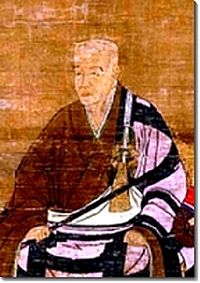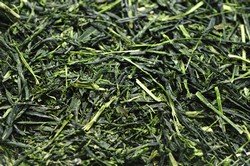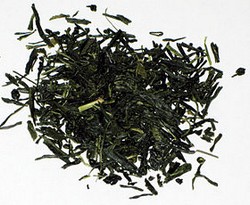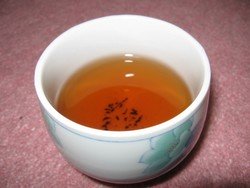Solving problems every tea drinker faces.
Exclusive subscriber benefits:
Receive four FREE quality ebooks worth $60
-
Save at least $5 during your first purchase
 The custom of drinking tea spread from China to Japan
during the 700's, when a series of diplomats from Japan visited the Chinese
capital of today's Xi-An.
The custom of drinking tea spread from China to Japan
during the 700's, when a series of diplomats from Japan visited the Chinese
capital of today's Xi-An.
Over the next few centuries, the diplomats returned to Japan with tea from China.
In the 12th century, Myoan Eisai, founder of the Rinsai school of Buddhism, brought back seeds and distributed them to other monks, and Japan had its own tea gardens.
Since then, Japan has evolved its own unique methods of growing, processing and drinking tea.
This guide will help you navigate the rich, flavorful world of tea in Japan:
Sencha
Sencha is the most commonly drunk beverage in Japan. If there is only one Japanese tea you want to explore, I highly recommend you start with sencha.
Like most Japanese tea, it is fixated by steaming, then rolled into a needle shape before drying.

This is different from the Chinese method of pan-firing, and it helps give sencha its distinctively intense green color and flavor.
Of Japan's 47 prefectures (provinces), Shizuoka, Kagoshima and Mie are the three major tea-producing regions.Other important tea-growing regions include the areas of the ancient capitals—Nara and Kyoto—where Japanese Buddhism has its roots, and various parts of Kyushu, with its comparatively mild climes.
Sencha - An Enigma of Japanese Loose-Leaf Green Tea?
Sencha Green Tea Health Benefits - How to Brew Hot and Iced
Gyokuro

Literally translated as "Jade Dew" for its pale green infusion, gyokuro is famous for being the most expensive of Japanese tea.
While sencha grows in full sun, gyokuro grows in shade.
About 20 days before harvesting begins, they are shrouded in black cloth that lets in only a small amount of sunlight.
Limiting the sunlight prevents theanine from converting to catechins and that results in lower astringency, more sweetness and a richer flavor.
An oika aroma, similar to nori seaweed, is a unique characteristics of gyokuro.
When brewed correctly, it has a complicated flavor that is intensely vegetal, mellow and sweet, all at the same time.
Gyokuro Green Tea A Real Challenge? A Brewing Guide
Kabusecha
Kabusecha is similar to gyokuro, but the shading only takes place one week prior to picking.
The result is somewhere in between gyokuro and sencha in flavor.
Compared to sencha, it is darker green, more full bodied and less astringent.
Tencha and Matcha
Tencha is used mainly to make matcha - the ceremonial Japanese tea powder.
Similar to gyokuro, the tencha tea plants are grown in shade. The finer tips are used to make gyokuro, while the larger leaves are used to make tencha.
Generally, the tea plant may be covered longer than the standard 20 days used for gyokuro. Unlike gyokuro, the tea leaves are steamed without being rolled. After removing the stalks and veins, the tea leaves become tencha.
To turn tencha into matcha, we need to find a way to powder the tea leaves into bits.
Highest quality matcha is ground into a vibrant green powder using slow-turning granite grinding wheel in small batches. Friction is minimized and tea leaves are not “burned” in the process, allowing the leaves to retain chlorophyll.
This method of grinding matcha has been used for centuries and is continued to this day. It is necessary to preserve matcha's unique colour, flavour and aroma profile.
To learn about the different grades available and how to buy a matcha, read
Matcha Green Tea Guide - Types and Grades
Hojicha

Hojicha is different from the other Japanese teas we have looked at so far.
Rather than being steamed, hojicha is roasted to a rich brown color. This tea makes an excellent nightcap, as the caffeine levels are low.
Hojicha Green Tea - A Perfect Decaffeinated Drink?
Genmaicha
The word "Genmaicha" means brown rice, rice that retains the bran covering.
It is created by mixing sencha or other teas with roasted brown rice, at a ratio of approximately 50:50. Sometimes matcha powder is added.
You may enjoy the savoriness of the roasted brown rice combined with the refreshing green of sencha.
Since sencha has already been diluted by rice, the caffeine content is low. It is said this tea is suitable for children and the elderly.
New! Comments: Like This Story? Leave A Comment!
References
Heiss, Mary Lou and Robert J. (2007) The Story of Tea-A Cultural History and Drinking Guide. Ten Speed Press, Berkeley, CA. pp 164-187
Wikipedia. "Green Tea." http://en.wikipedia.org/wiki/Green_tea#Japanese_green_teas
Also In This Section...
Japanese Green Tea - How to Buy Matcha and Sencha Online
How to buy the best Japanese green tea. We get you started with five online tea shops.
Japanese Tea History - A Thousand Year Journey From China, Chanoyu to Sencha
The fascinating Japanese tea history reveals how a Chinese import - green tea - became the Island's favorite beverage.
Kukicha and Hojicha - Low In Caffeine and Health Benefits?
Julian, what about Japanese kukicha and hojicha teas? Do they contain little caffeine? How about health benefits?
The Book Of Tea By Kakuzo Okakura
Written by Kakuzo Okakura in 1906, this is a tea classic that you will either love or loathe. Unlike many of the tea classics, which are either written by a Westerner for the Western audience, this is an English book written by a native Japanese artist.
Japanese Tea Ware
Tea Sets (Cast-Iron, Ceramic and Clay) for Sencha, Matcha and Gyokuro
What you need to know before you start shopping for Japanese tea sets.
Tea Pots - How to Buy Kyusu, Tetsubin and Houbin
Known as kyusu, Japanese tea pots are objects of beauty and practical equipment. How to buy a tetsubin, small kyusu and houbin.
Tetsubin Tea Pot Review - Japanese Cast Iron Ware
The tetsubin is a cast-iron tea pot first used by the Japanese. In this article, I review two products - one by Old Dutch, the other by Teavana.
Japanese Cups (Yunomi Chawan) - A Buyer's Guide
Japanese tea cups are known as yunomi chawan or simply yunomi. They are for drinking loose-leaf teas such as sencha or gyokuro.
Tea Kettles - Tetsubin, Chagama and Electric Compared
They come in three varieties: Chagama, Tetsubin and Electric. Which one is right for you?
Tea Trays - For Ceremony and Everyday Use
There are two types of Japanese trays, with each designed for chanoyu and everyday use.
Back to Top of Japanese Tea
Back to Amazing Green Tea Home
Solving problems every tea drinker faces.
Exclusive subscriber benefits:
Receive four FREE quality ebooks worth $60
Save at least $5 during your first purchase
Copyright� 2006-2025 Amazing-Green-Tea.com. All rights reserved.

